Choosing self-tapping screws for a hexagon
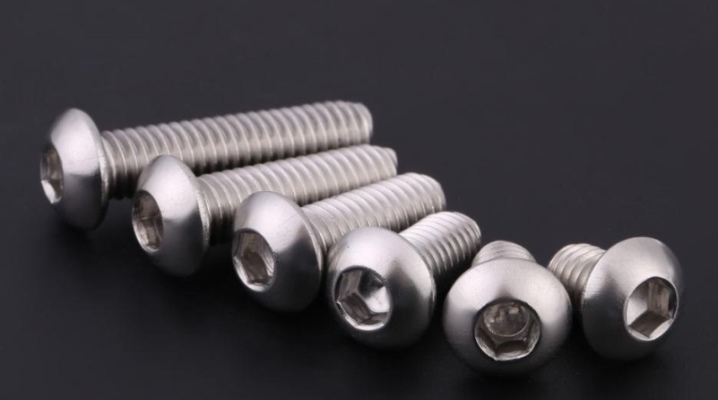
Self-tapping screws are the most popular choice of fasteners in construction work from scratch and during minor or major repairs. The parameters of any self-tapping screw are always indicated by three numbers, the first of which is the outer diameter of the thread in mm, and the other two are the length from the screw head to the end. Different types of self-tapping screws differ in the screwing method and design features. Each specific type of self-tapping screw is suitable for a specific type of material with which it will interact most effectively.
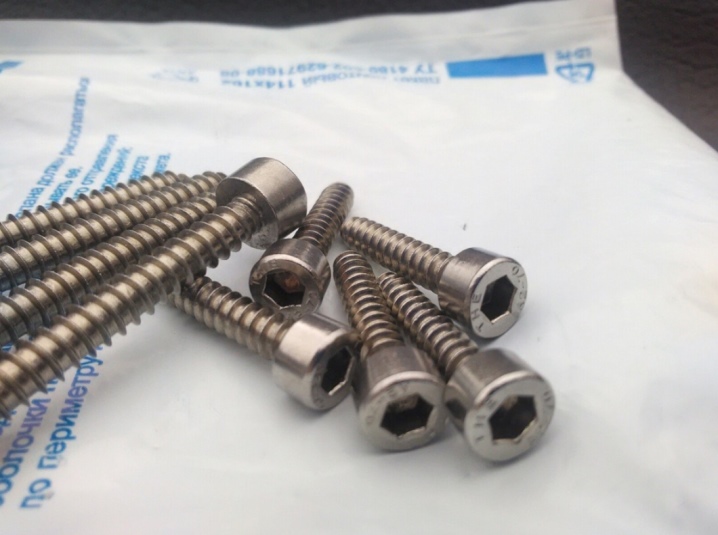
Peculiarities
If we consider a self-tapping screw for a hexagon, then outwardly it looks more like a bolt with several external signs.
- Screw threads are infrequent.
- The sharp end is not sharpened too much and hardly stands out.
Its scope of application is quite wide due to how original its design is. If a hex head screw is used simultaneously with a dowel, then, for fastening large parts to a tree, you can use this self-tapping screw to fasten the necessary parts even to concrete. The only caveat is that the dowel in diameter should be exactly twice as large as the head for reliable fastening.
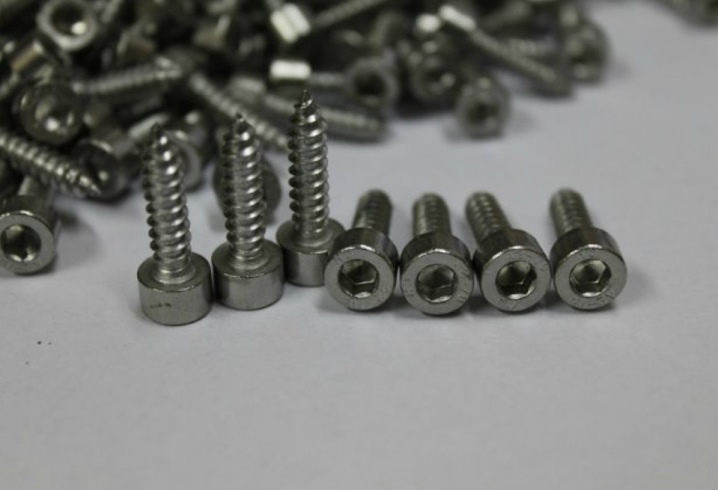
For work, you will need keys of 10, 13 or 17 mm, depending on the type of bolt that the master plans to use. Also, such fasteners are sometimes called "wood grouse", because it tightly secures almost any object to the surface with the right approach. When the socket head bolt is used to organize the roof, its design also has a number of features.
- A hard and sharp tip, similar in shape to a drill.
- Hex head bolt.
- Rubber washer.
The latter serves as a kind of insulator that reliably protects the bolt from moisture ingress. Accordingly, in this case, there is less risk of rust and moisture. In addition, the washer makes the connection to the screw much tighter than under normal conditions. In terms of their diameter, such fasteners can be from 8 to 10 mm inclusive. And the length can be up to 100 mm, so you can pick up a screw for literally any roofing material, with any level of load, depending on the need and need.
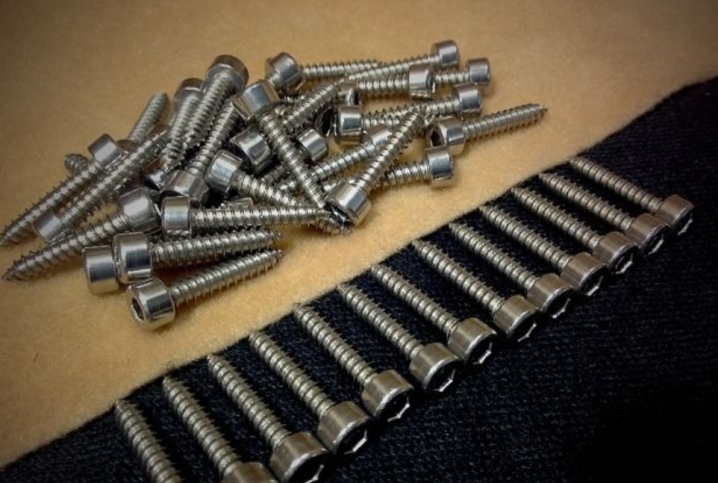
Anti-vandal self-tapping screws that cannot be turned out without the use of special tools are also popular among hexagonal or multi-sided screws. Their design itself is already attracting a lot of attention outwardly, and the rigid fastening eliminates the risk of any kind of structural failure, which is very useful in public facilities, especially if you pay attention to the name of the screws.
Self-tapping screws with a press washer in the design can also have six faces, but in this case there is one important nuance. The area of their cap is much larger, which is suitable for attaching metal sheets. Most often they do not have any characteristic color; outwardly, they resemble ordinary silver bolts.
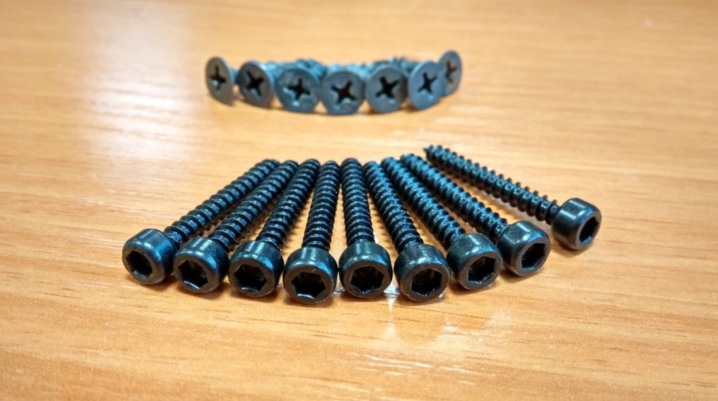
Another option, when it comes to the design features of specialized screws, is self-tapping screws for the production of furniture. They are distinguished by a blunt tip and are tightened with a special hex wrench. Their diameter is generally the same for the entire length, but towards the head the bolt itself becomes a little thicker.
The hole for such a hexagon in the furniture is provided in advance.
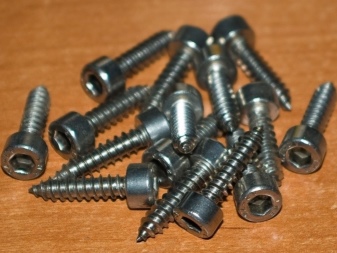
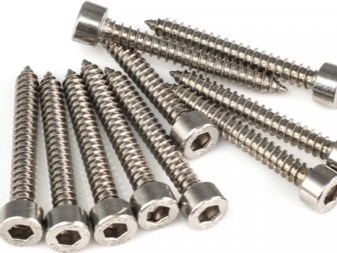
What are they?
There are several types of possible self-tapping screws that are widely used in the market.
- Wood.
- On concrete.
- For special steel sheets where drill work is to be done.
- For speakers.
- For fastening windows and doors.
- Galvanized self-tapping screw for logs and rails.
- Self-tapping screws for plumbing (most often, in narrow circles, they are called so - plumbing).
- Self-tapping screws with a cylindrical head.
- For roof fastening.
- For working with drywall, taking into account coarse threads.
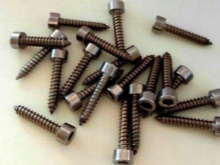
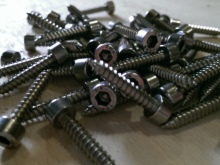
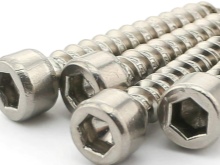
Fasteners for wood are mainly used in the production of cabinet furniture and any other wooden structure. This self-tapping screw has a double-shaped hex head. The thread in this case is very wide, so that it can be screwed in rather securely. Fittings, loot, wooden profiles on windows and much more are installed with such fasteners, their scope of application is quite wide. The end result will often depend directly on the task at hand.
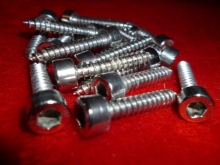
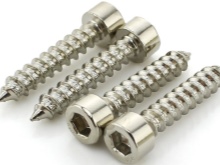
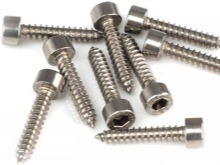
Self-tapping screws for working with metal profiles, pipes or sheets are distinguished primarily by their unique design features... The head of such self-tapping screws can be in the form of a hemisphere, hexagon or pressed washer. The material for the manufacture of such self-tapping screws is carbon steel, specially treated for a longer service life. Such self-tapping screws are usually galvanized, they are marked with markings by which the user can easily recognize the diameter and length of the bolt.
Hexagon self-tapping screws, in principle, are often used for fastening wooden products. Its twisting is possible with a wrench with the required diameter. If the kit includes a dowel, it is twice the diameter of the self-tapping screw itself. In concrete walls, a hole for such fasteners is drilled exactly according to the diameter of the dowel. With their help, steel corners and steel profile guides are fixed. The self-tapping screw is screwed into the dowel itself after a hole of the required diameter has been drilled. Self-tapping screws, unlike screws, have a wider scope and are considered a more reliable option for fasteners, with which you can work with stone, concrete or brick.
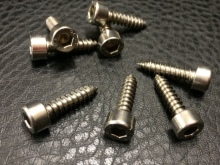
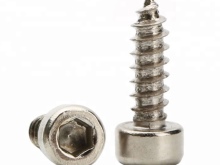

If you need to fix something really heavy, then an anchor bolt is used. They also have dowels, but they are most often made of metal. Due to a tighter connection, the product will firmly and reliably adhere to the wall, even if it is made of natural stone.
This type of self-tapping screw is suitable for attaching chandeliers or stretch ceilings, sports structures or children's swings.
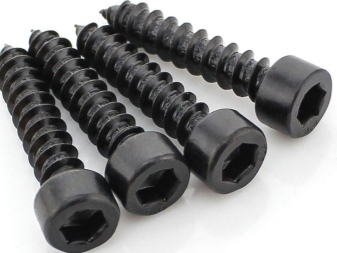
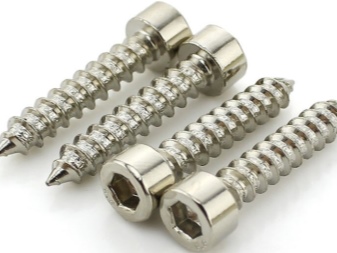
Dimensions (edit)
As for the dimensions, according to the requirements of GOST, the diameter of the hexagon cannot be less than 8 mm. If this indicator does not match, then we are definitely talking about some other type of fastener. The size chart also mentions the following basic parameters for a hexagon:
- 6x50;
- 6x60;
- 6x100;
- 8x80;
- 8x100;
- 10x60;
- 10x100;
- 12x70.
For each type of hex, a specific type of key is used, and each of them has its own field of application, where they will work most effectively. Choosing a hexagon in terms of size and performance, as well as design features, the risk of making a mistake becomes much less.
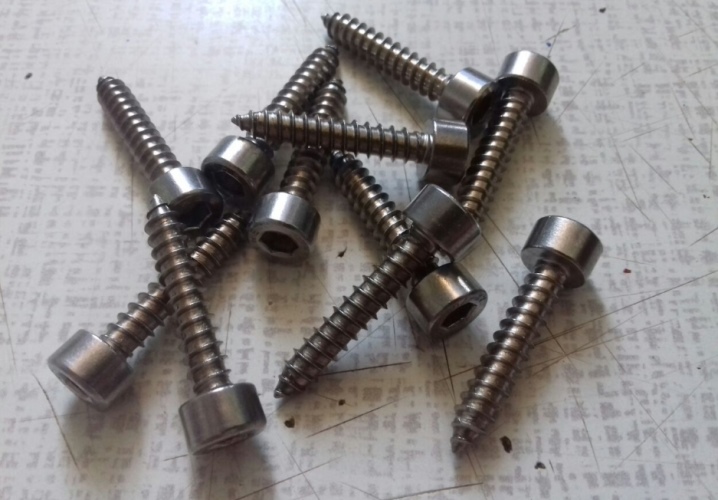
Selection Tips
Six-sided hardware is used in many areas, and the right choice depends on many different nuances. The correct choice is also important because if you tighten the wrong bolt, the thread can break off at the most inopportune moment, and the entire repair will be completely down the drain. The first thing you need to pay attention to is the material of manufacture and construction.
It is preferable to choose steel of a sufficiently high standard, which will have high characteristics. In addition, an external and internal hex screw will last much longer and more reliable than any other option. When buying, pay attention that the head fits exactly the turnkey. The tightening should not go tight or, on the contrary, hang freely, in any of these options the fasteners will no longer be sufficiently reliable for work.
The next criterion that cannot be ignored is strength. According to government standards, there are certain indicators that the screws must ideally meet for the stated conditions of use. But a lot will also depend on manufacturing technologies, which is why it is so important to select the right raw materials.
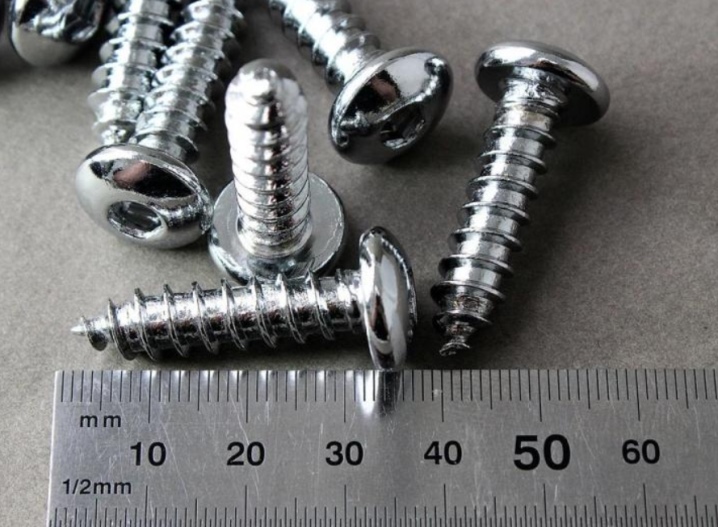
It is worth saying that this is far from wire steel. Screws, unlike nails, must be stronger and more reliable, and this material will not work for this in any way. As for the indicators, here the figure varies from a minimum of 3.8-4.0 to 13 in terms of strength. The most suitable option is considered when alloy steel of a combined nature serves as the material of manufacture. Such elements are often used as additives in such a material to enhance physical and technical properties.
- Titanium.
- Vanadium.
- Chromium.
- Nickel.
- Nitrogen.
- Copper alloys.
All these metals make up a share in the total weight of the product and provide high technical characteristics. For road repairs and any similar areas where a fairly high level of stress is required, the correct choice of material is very important. Another important nuance is design features.
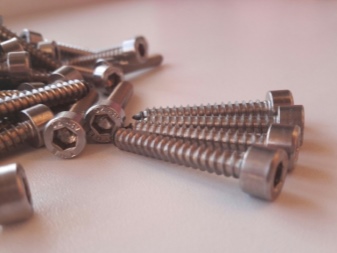
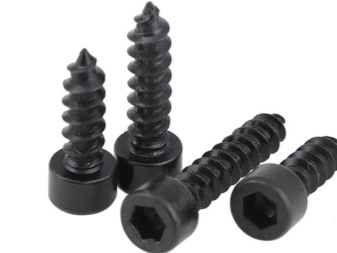
For example, specifically for road repair or bridge fastening, large, reverse-threaded hexagons are commonly used. In such screws, the protrusions are almost invisible so as not to break the thread during work. A similar design is also used in the automotive industry and sometimes in plumbing repairs.
Usually these are mixer screws. Accordingly, when choosing a hexagon, in any case, you will have to take into account the future scope of application.
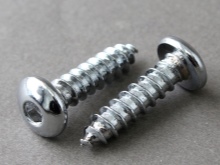
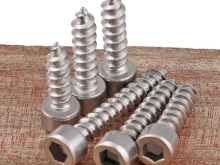
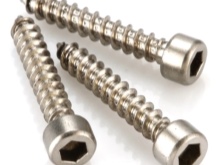
The following video talks about hex screws.













The comment was sent successfully.